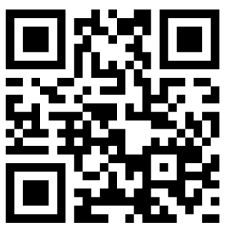
This edition first published 2013, 2013 by John Wiley & Sons Ltd.
Wiley-Blackwell is an imprint of John Wiley & Sons, formed by the merger of Wiley's global Scientific, Technical and Medical business with Blackwell Publishing.
Registered office: John Wiley & Sons, Ltd, The Atrium, Southern Gate, Chichester, West Sussex, PO19 8SQ, UK
Editorial offices: 9600 Garsington Road, Oxford, OX4 2DQ, UK
The Atrium, Southern Gate, Chichester, West Sussex, PO19 8SQ, UK
2121 State Avenue, Ames, Iowa 50014-8300, USA
For details of our global editorial offices, for customer services and for information about how to apply for permission to reuse the copyright material in this book please see our website at www.wiley.com/wiley-blackwell.
The right of the author to be identified as the author of this work has been asserted in accordance with the UK Copyright, Designs and Patents Act 1988.
All rights reserved. No part of this publication may be reproduced, stored in a retrieval system, or transmitted, in any form or by any means, electronic, mechanical, photocopying, recording or otherwise, except as permitted by the UK Copyright, Designs and Patents Act 1988, without the prior permission of the publisher.
Designations used by companies to distinguish their products are often claimed as trademarks. All brand names and product names used in this book are trade names, service marks, trademarks or registered trademarks of their respective owners. The publisher is not associated with any product or vendor mentioned in this book. It is sold on the understanding that the publisher is not engaged in rendering professional services. If professional advice or other expert assistance is required, the services of a competent professional should be sought.
The contents of this work are intended to further general scientific research, understanding, and discussion only and are not intended and should not be relied upon as recommending or promoting a specific method, diagnosis, or treatment by health science practitioners for any particular patient. The publisher and the author make no representations or warranties with respect to the accuracy or completeness of the contents of this work and specifically disclaim all warranties, including without limitation any implied warranties of fitness for a particular purpose. In view of ongoing research, equipment modifications, changes in governmental regulations, and the constant flow of information relating to the use of medicines, equipment, and devices, the reader is urged to review and evaluate the information provided in the package insert or instructions for each medicine, equipment, or device for, among other things, any changes in the instructions or indication of usage and for added warnings and precautions. Readers should consult with a specialist where appropriate. The fact that an organization or Website is referred to in this work as a citation and/or a potential source of further information does not mean that the author or the publisher endorses the information the organization or Website may provide or recommendations it may make. Further, readers should be aware that Internet Websites listed in this work may have changed or disappeared between when this work was written and when it is read. No warranty may be created or extended by any promotional statements for this work. Neither the publisher nor the author shall be liable for any damages arising herefrom.
Library of Congress Cataloging-in-Publication Data
Psychodynamic formulation / by Deborah L. Cabaniss ... [et al].
p. ; cm.
Includes bibliographical references.
ISBN 978-1-119-96234-2 (cloth)
I. Cabaniss, Deborah L.
[DNLM: 1. Mental Disordersdiagnosis. 2. Mental Disorderstherapy. 3. Patient Care Planning. 4. Psychoanalytic Therapymethods. WM 141]
616.89dc23
2012047255
A catalogue record for this book is available from the British Library.
Wiley also publishes its books in a variety of electronic formats. Some content that appears in print may not be available in electronic books.
Cover image: Nicki Averill Design & Illustration
Cover design by Nicki Averill Design & Illustration
For our families:
Thomas, William and Daniel
Marc, Rebecca and Ruth
Jon, William and Ben
Michael, Sam and Jacob
Eric, Lena and Maia
This book may be seen as a companion to Psychodynamic Psychotherapy: A clinical manual. For details, see www.wiley.com or scan this QR code:
Acknowledgments
Constructing a psychodynamic formulation is one thing, but trying to teach someone else to construct one is something else entirely. It's like trying to teach someone to tie a shoe. You know how to do it, but what are the steps? How do you put things together? What do you have to know in order to do it? This is what my coauthors and I tried to figure out. The result is our DESCRIBE/REVIEW/LINK method and a curriculum that helps students learn why psychodynamic formulations are important and how to construct them from the bottom up. Along the way, Sabrina Cherry and I wrote formulations and discussed our thought process over countless phone calls; Carolyn Douglas helped to keep us balanced between nature and nurture; Ruth Graver helped to devise a wonderful, dimensional way to describe function; and Anna Schwartz reminded us of the centrality of trauma and the utility of formulations in multiple settings. Both Psychodynamic Psychotherapy: A Clinical Manual and Psychodynamic Formulation would not be what they are if not for this incredible team of women who are outstanding clinicians, educators, and writers. I am, as ever, grateful for their time, effort, creativity, and friendship.
The beta version of this book was road-tested by our terrific Columbia residents, and I thank them for putting up with early drafts riddled with typos. Having the opportunity to teach them day in and day out, year after year, keeps us asking the important questions about education. I owe many thanks to Justin Richardson, who helped me to conceptualize new ways of teaching formulation and with whom I taught for 5 years. David Goldberg, Deborah Katz, and Volney Gay are world-class psychodynamics educators whom I have come to rely on for their wisdom and guidanceeach of them carefully read the entire manuscript and gave us invaluable comments that helped us to shape the final product. Sarah Paul offered insightful comments as well. Steven Roose kept me on track to think about function rather than disorders, and Roger MacKinnon made sure that psychodynamic formulation would always be a central part of psychiatric training at Columbia. Joan Marsh, our editor at Wiley, has become a friend and I am grateful for her enthusiasm about our work. Maria Oquendo and Melissa Arbuckle continue to support our teaching at Columbia, without which none of this would be possible.
I'd also like to thank the many students and educators who are using and enjoying Psychodynamic Psychotherapy: A Clinical Manual. The overwhelmingly positive response we got to the Manual energized us write this companion volume. We are delighted that it has helped to make psychodynamic technique more understandable, and we hope that this book does the same for psychodynamic formulation.
Older and wiser than they were when we wrote the first book, my children William and Daniel are now resigned to the idea that their mom likes writing on nights and weekends. I know that they are proud of me and of the work I'm doing. They will be ready to edit the next book. And, once again, Thomas read every wordsometimes twiceand kept the faith even when I didn't. I couldn't do any of it without him.
Next page











